



As long as I can remember the massive statue of Chief Blackhawk has always held extreme fascination for me. The statue is located at Lowden State Park in the small town Of Oregon, Illinois which is situated along the banks of the Rock River. When driving to the larger city of Rockford, Illinois the statue is very visible for the highway even at night as it is lit up with big flood lights.
As a small child and even today when traveling to Rockford seeing Chief Blackhawk is a big high light of the trip.
In the year 1767, in the village of Saukenuk, located a few miles north of the confluence of the Rock River with the Mississippi River in northwestern Illinois, a child was born. This was Ma-ca-tai-me-she-kia-kiak, which means "Black Sparrow Hawk" in the Algonquin language of the Sauk. Whites would later call him Black Hawk. He would become one of the most fearsome yet respected Native American warriors to be born in what is now the state of Illinois.
Sometime in early historic times, the Sauk, feeling pressure from the French and Chippewa, migrated southward out of central Wisconsin, into southwestern Wisconsin, Northwestern Illinois, and northeastern Iowa. Some settled at the rapids of the Mississippi, near what is today Keokuk, Iowa. Another group settled near the mouth of the Rock River in Illinois. A third group settled on the Osage and Missouri Rivers in the late 1700s. The Sauk were allied with the Meskwaki (known to whites as the Fox) and often lived among them and vice versa. Principal native enemies of the Sauk included the Minnesota Sioux (Santee Dakota and Yankton Nakota), Osage, and Chippewa.
At the age of just fifteen, Ma-ca-tai-me-she-kia-kiak joined a raid against the Osage. He succeeded in killing and scalping an enemy warrior, which entitled him upon return to Saukenuk to join in the scalp dance. At this early age, Black Hawk had become a Sauk warrior. A short time later, he led seven Sauk warriors in an attack against an encampment of 100 Osages. Ma-ca-tai-me-she-kia-kiak killed an enemy, then escaped without losing a man. In a very short time, he became one of the most influential warriors in the Nation.
Later in life Chief Blackhawk and his tribe left Illinois for the state of Iowa.
As a small child and even today when traveling to Rockford seeing Chief Blackhawk is a big high light of the trip.
In the year 1767, in the village of Saukenuk, located a few miles north of the confluence of the Rock River with the Mississippi River in northwestern Illinois, a child was born. This was Ma-ca-tai-me-she-kia-kiak, which means "Black Sparrow Hawk" in the Algonquin language of the Sauk. Whites would later call him Black Hawk. He would become one of the most fearsome yet respected Native American warriors to be born in what is now the state of Illinois.
Sometime in early historic times, the Sauk, feeling pressure from the French and Chippewa, migrated southward out of central Wisconsin, into southwestern Wisconsin, Northwestern Illinois, and northeastern Iowa. Some settled at the rapids of the Mississippi, near what is today Keokuk, Iowa. Another group settled near the mouth of the Rock River in Illinois. A third group settled on the Osage and Missouri Rivers in the late 1700s. The Sauk were allied with the Meskwaki (known to whites as the Fox) and often lived among them and vice versa. Principal native enemies of the Sauk included the Minnesota Sioux (Santee Dakota and Yankton Nakota), Osage, and Chippewa.
At the age of just fifteen, Ma-ca-tai-me-she-kia-kiak joined a raid against the Osage. He succeeded in killing and scalping an enemy warrior, which entitled him upon return to Saukenuk to join in the scalp dance. At this early age, Black Hawk had become a Sauk warrior. A short time later, he led seven Sauk warriors in an attack against an encampment of 100 Osages. Ma-ca-tai-me-she-kia-kiak killed an enemy, then escaped without losing a man. In a very short time, he became one of the most influential warriors in the Nation.
Later in life Chief Blackhawk and his tribe left Illinois for the state of Iowa.
the Sauk were cornered and defeated at the Battle of Bad Axe on August 2nd, 1832. Ma-ca-tai-me-she-kia-kiak and his son (Whirling Thunder) were made prisoners and shown around the country by President Andrew Jackson as spoils of war. The rest were removed to "Indian Territory" to the west.
Lorado Taft, created the 50-foot statue as a tribute to Native Americans.
The figure is estimated to weigh 100 tons and is thought to be the second largest concrete monolithic statue in the world. Although Taft dedicated the statue to Native Americans, it has become commonly associated with Black Hawk.
The photos show different views of the statue and a view of the Rock River below as Chief Blackhawk sees it.




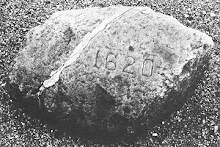
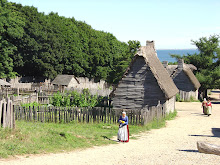






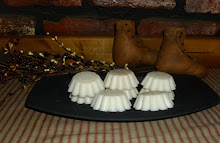


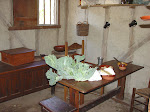
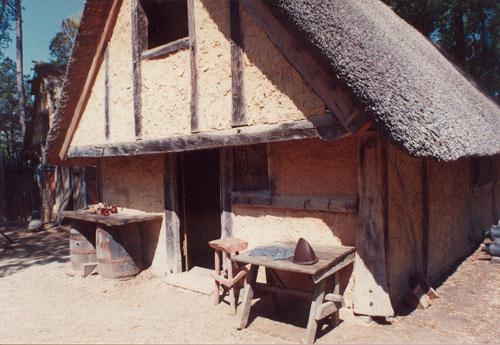
6 comments:
It was all not-so-long-ago, and yet it seems so vastly different than our lives today. I have to wonder if the Blackhawk helicopter is named after this fearsome Indian chief.
It could be that the helicopter is named after him as many things are. There was even a war named after him- I think it was the Blackhawk war of 1812.
LOVE YOUR INFORMATION AND PICTURES TOO...
Thanks! Glad you enjoyed it!
I have exactly the same reaction to the statue of Blackhawk as you do. I was born in Rockford, moved and grew in Washington State and traveled back to Rockford nearly every summer while growing up.
I have always been drawn to Blackhawk, primarily, I suppose, because of this statue. It's a calm feeling and oddly a sense of kinship, even though I'm Norwegian and Swedish. Blackhawk and the Sauk Fox, have become a part of who I am and feel close to, yet I don't know why.
Thank you so much for sharing your story and of course, the photos.
Thomas
Dear Blogger,
With all due respect, I must disagree, in part with regards to your statement of where the Sauk (Sac) and Fox originated.
I've been doing some genealogical research off and on for several years, and even yesterday spoke with an historian at the Sac and Fox Nation in Stroud, Oklahoma.
The oral history, and even some written history places both the Sac and Fox fairly deep into the northeastern reaches of Canada, along the St. Lawrence River.
Although, it is true that the Sac had tribal feuds with the Chippewa and Osage, they also had many disputes with the Cherokee which, in one battle, Blackhawk's father, Pyesa, Sauk Medicine Man and Warrior, was killed. The medicine bag, in the shape of a Beaver pelt, was passed on to Blackhawk by his father.
Much of what you write affirms much of I've discovered during my own research. However, there are many missing pieces to the entire puzzle.
For instance, it is believed that Chief Blackhawk only had one wife. This is debatable because, although not widely practiced, polygamy took place in families of stature within the Sac and Fox tribes. As such, it is difficult to ascertain with a great deal of accuracy, exactly how many wives and/or children had.
The wife most noted in Blackhawks's history is his wife, Asshewequa (Singing Bird)who lived with and served him in his last days in Iowa.
Perhaps, it would be nice to comprise a Blackhawk family database through which, those of us who seek to know our own heritage, would be more able to find specific information.
Thank you for sharing your information.
Sincerely,
Boyd McLaughlin, great-grandson to David Columbus Blackhawk
Email: hawgdawg@centurytel.net
Post a Comment